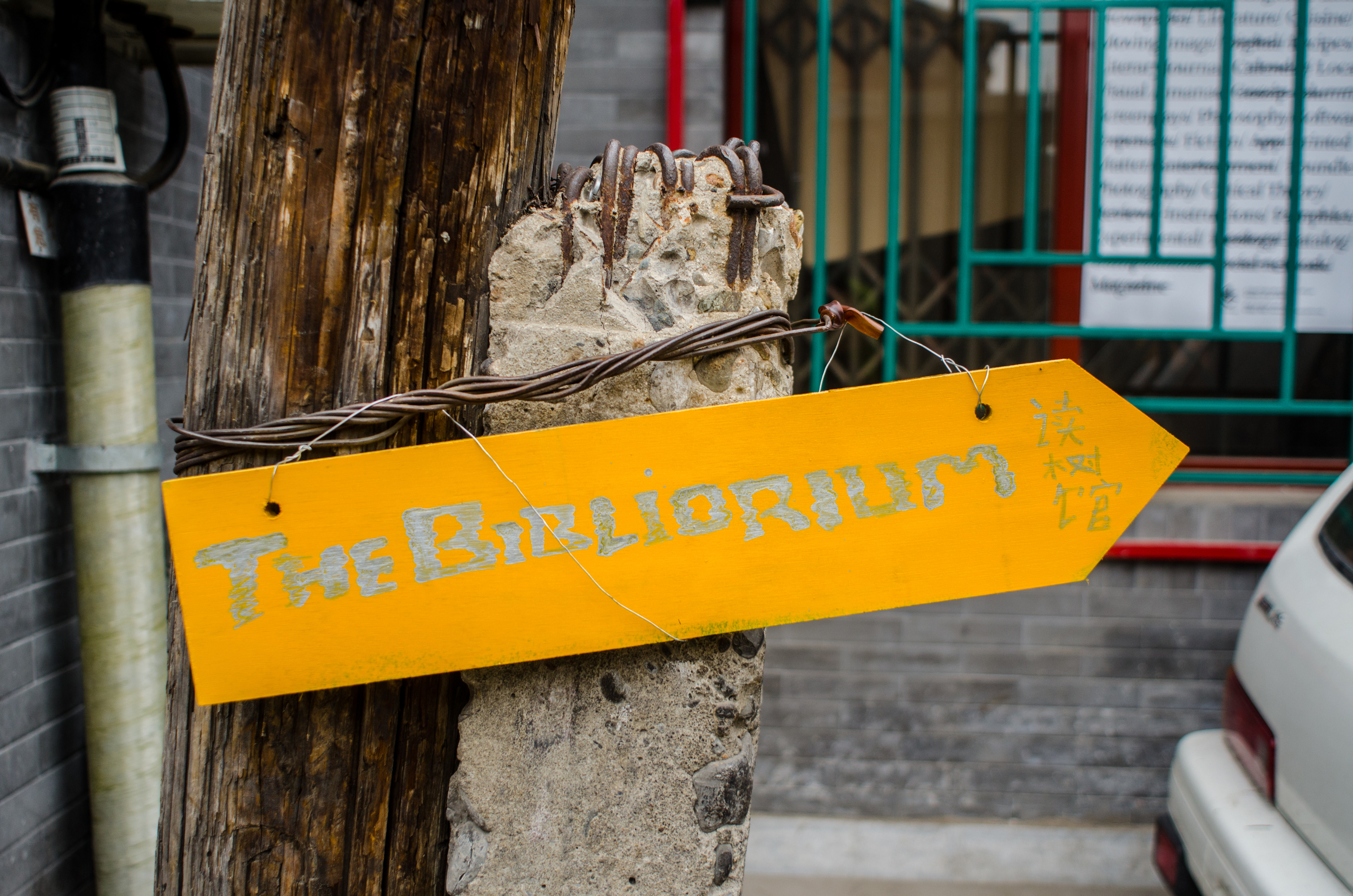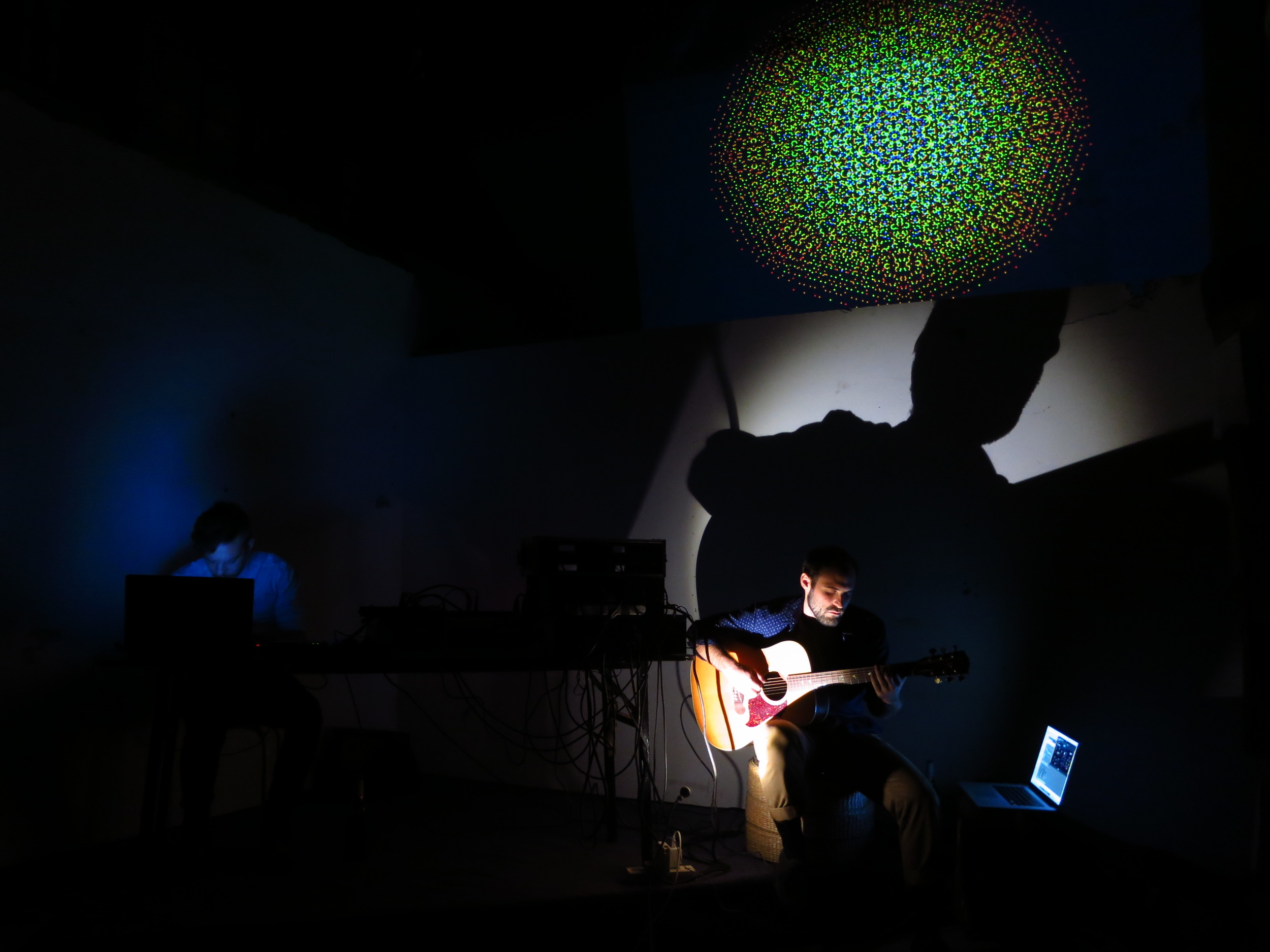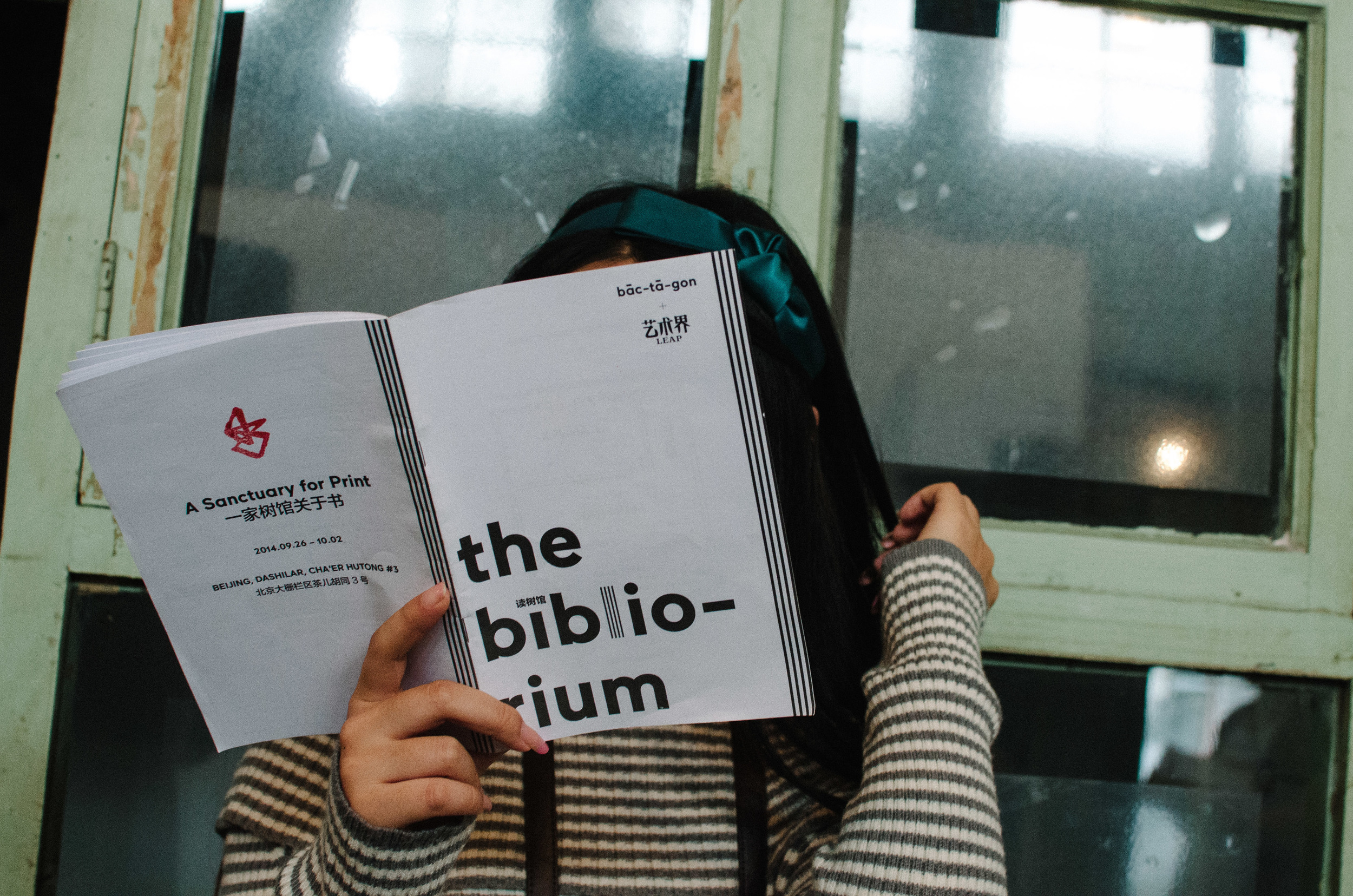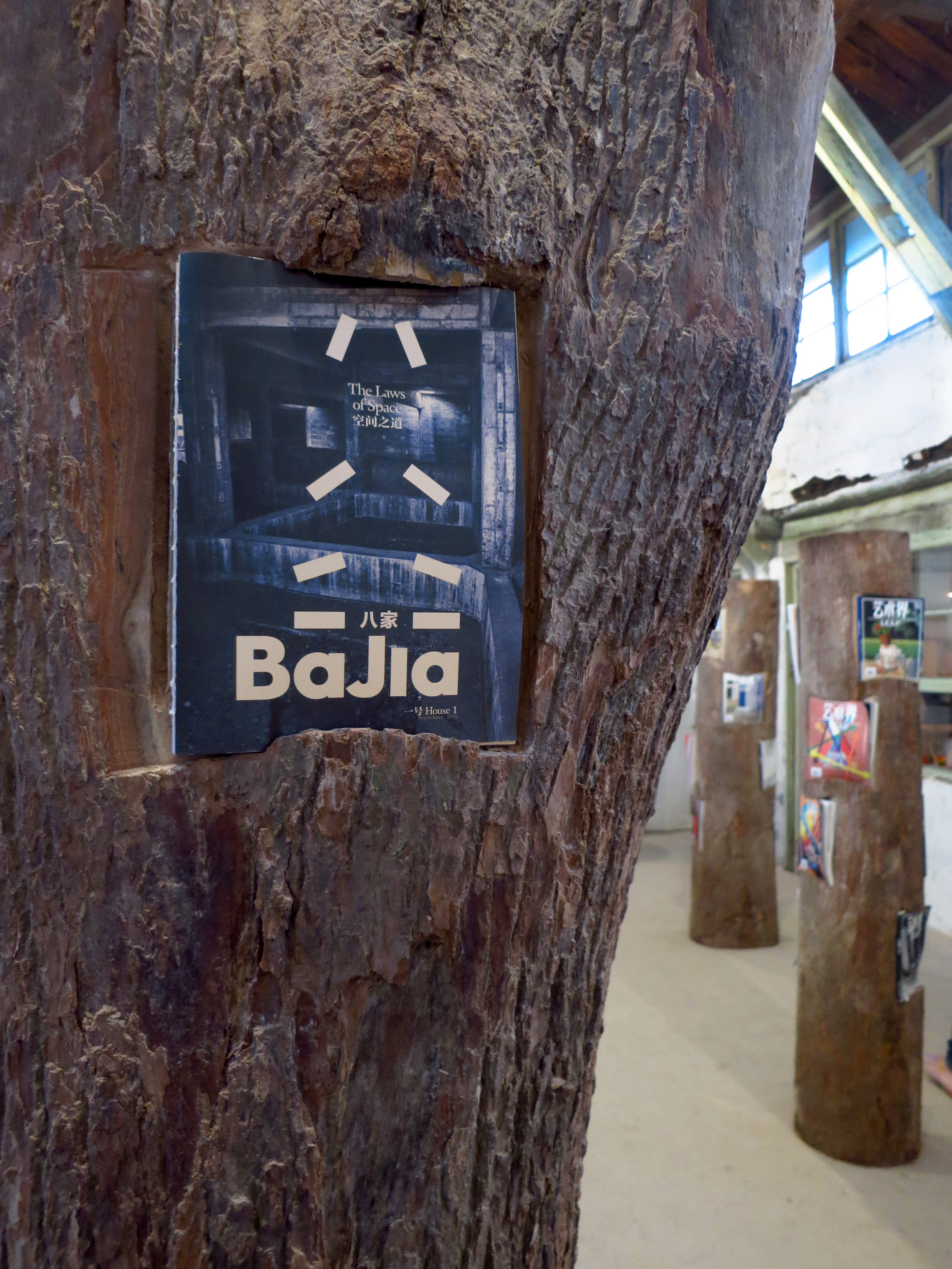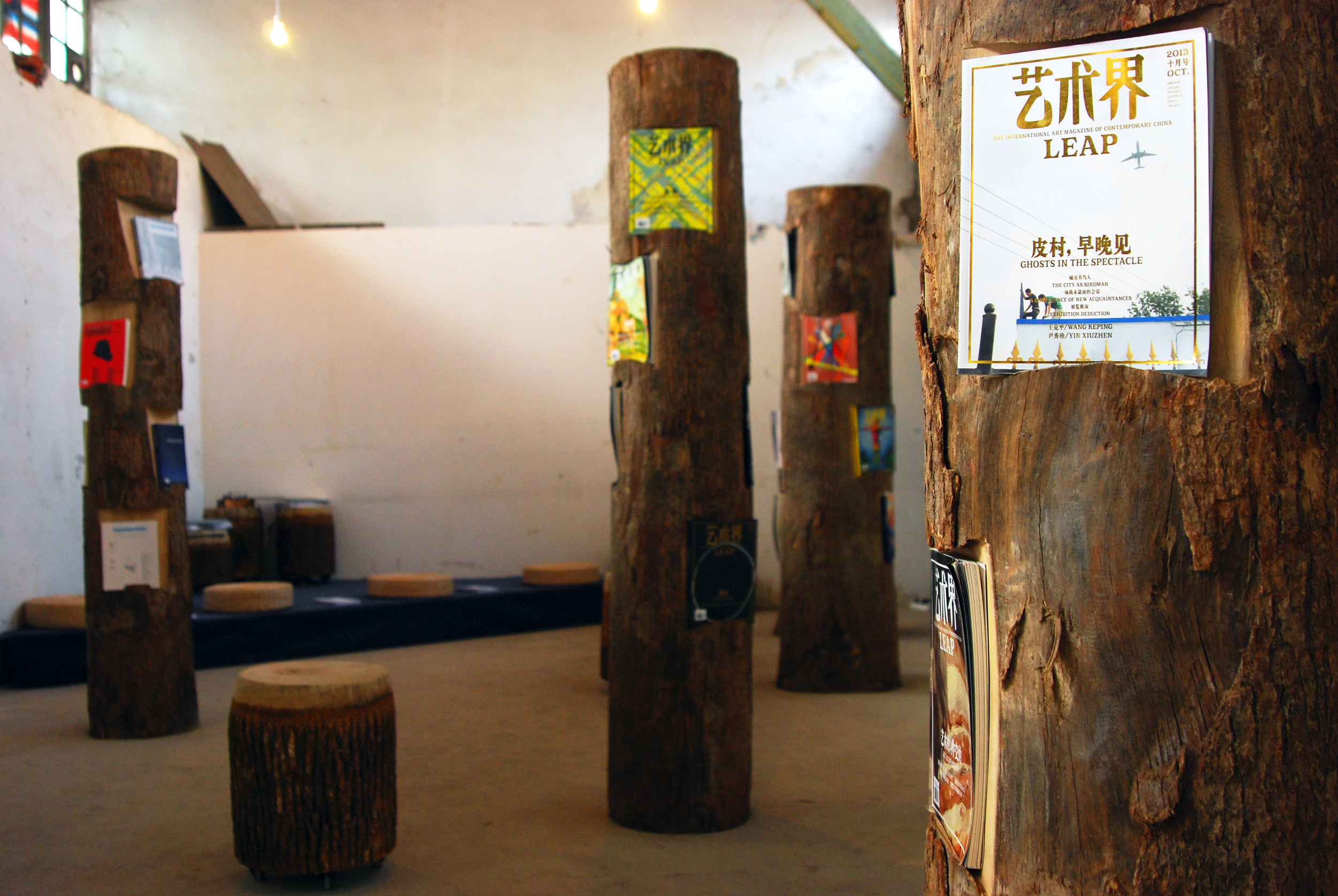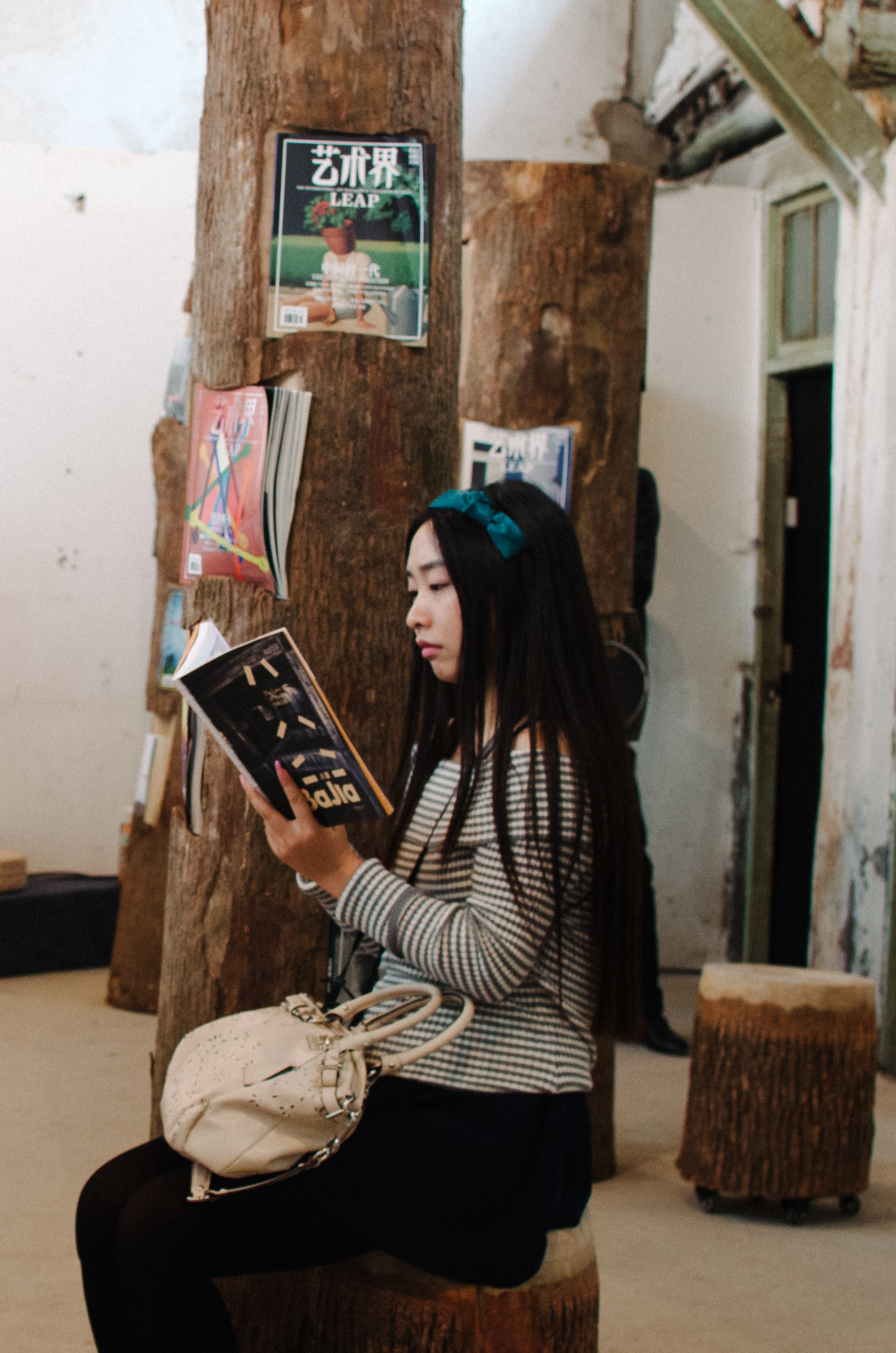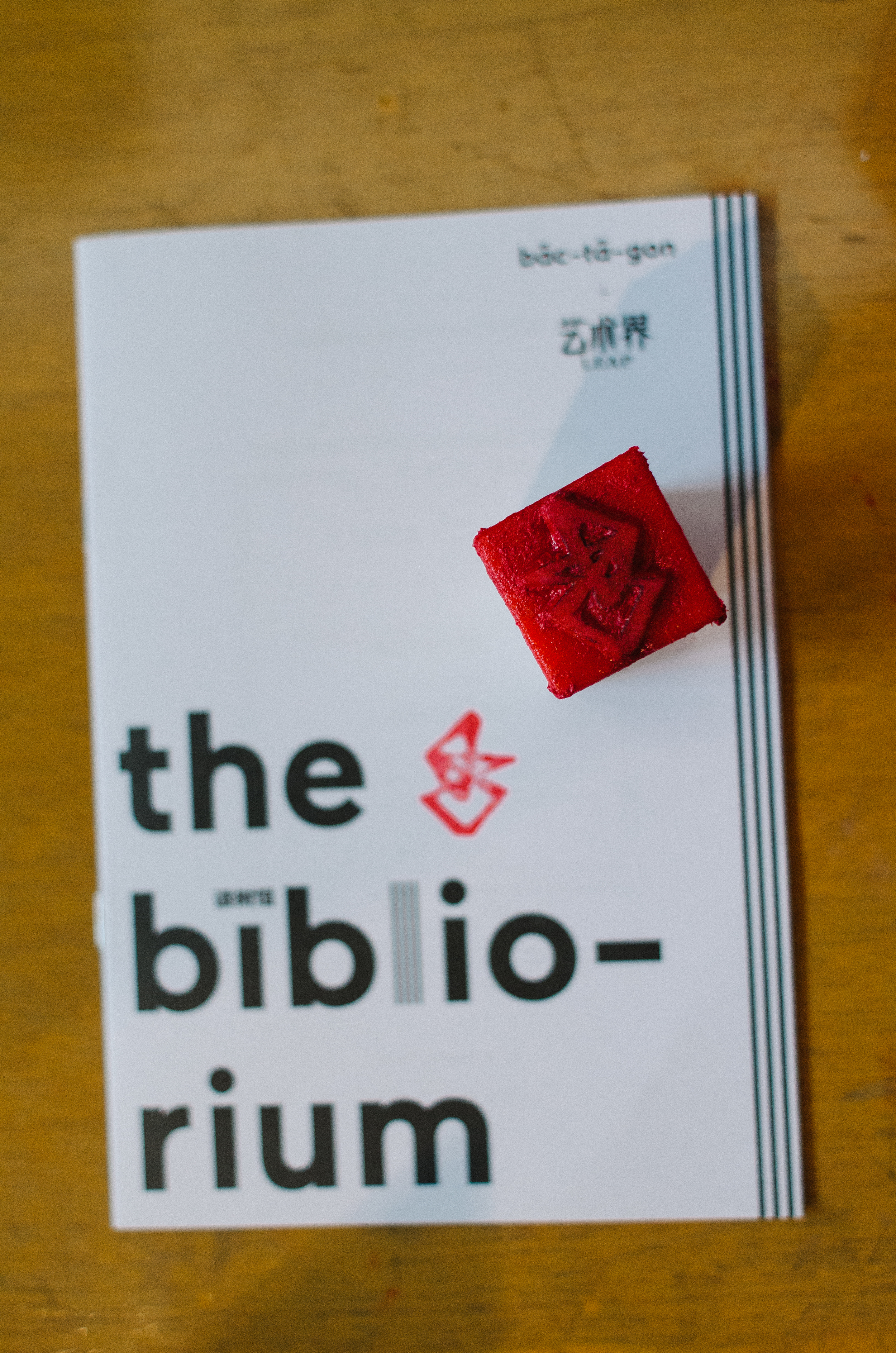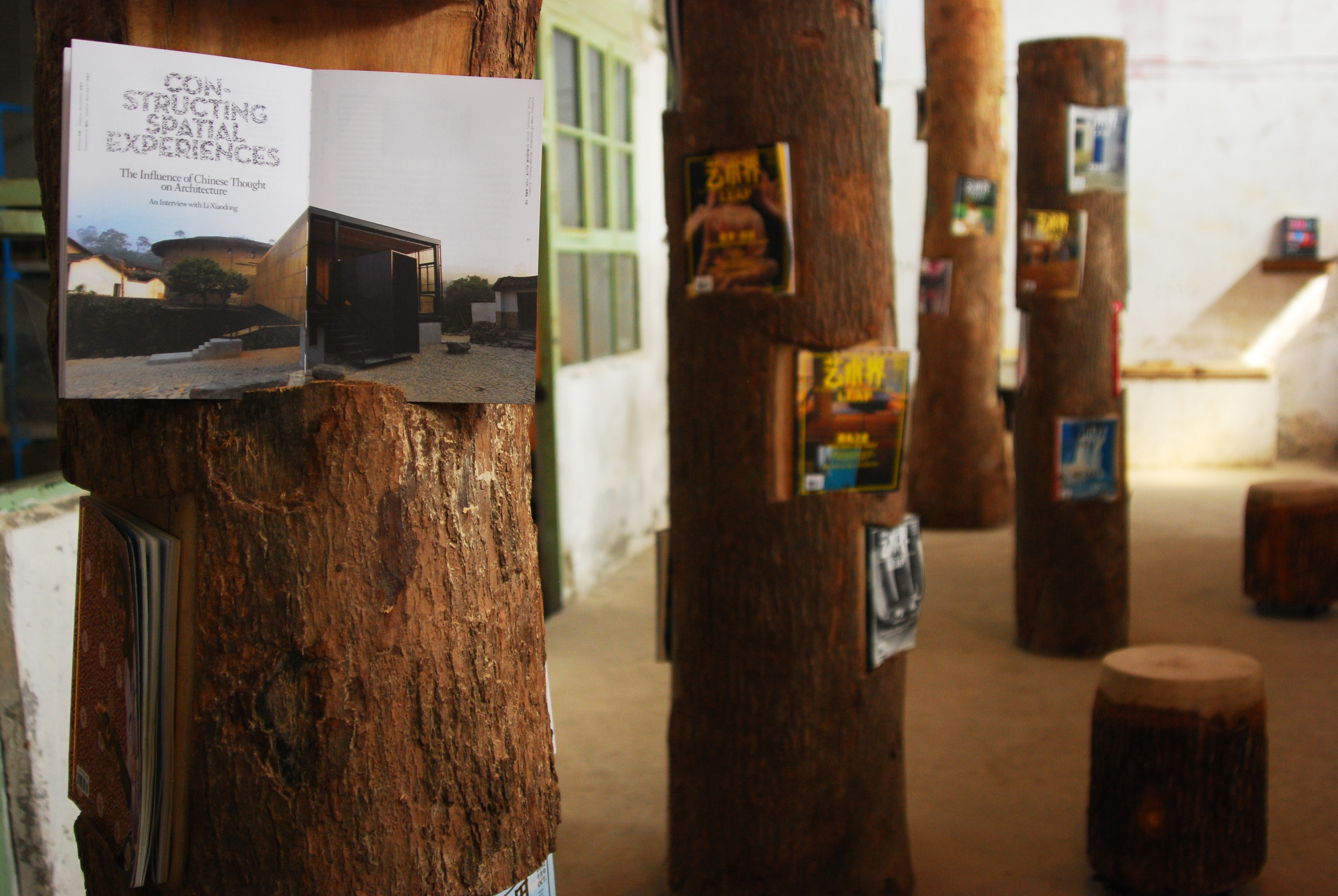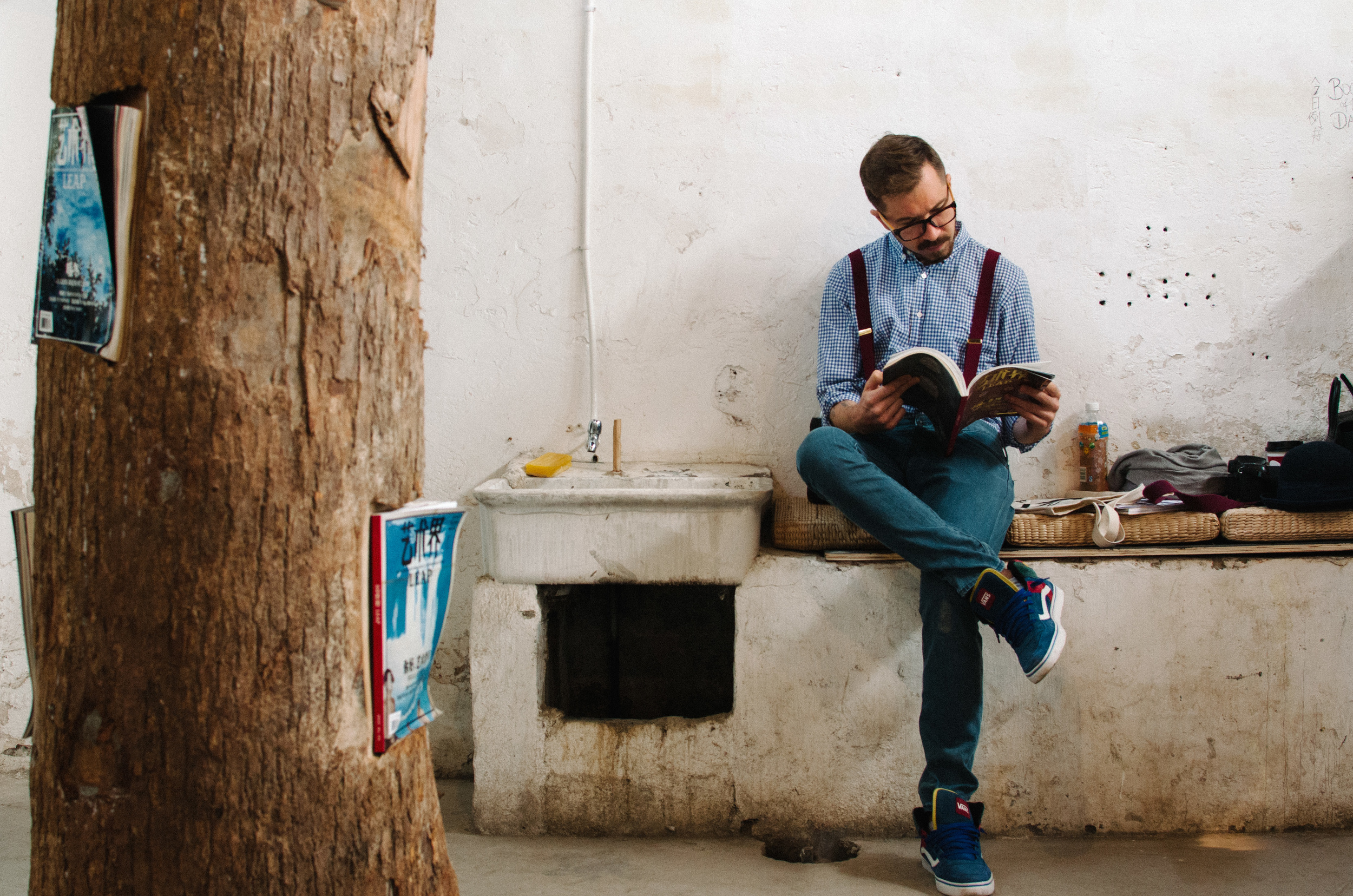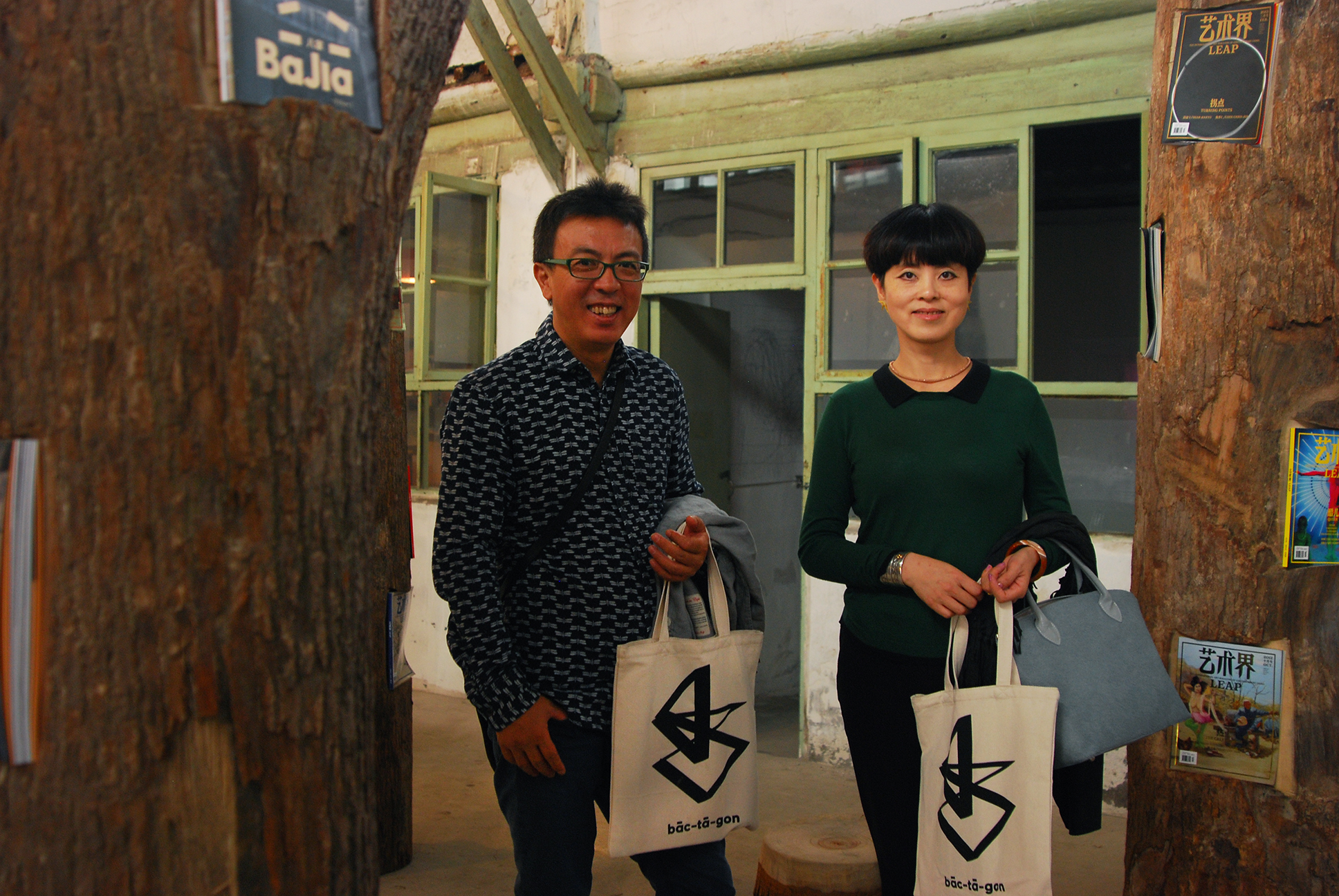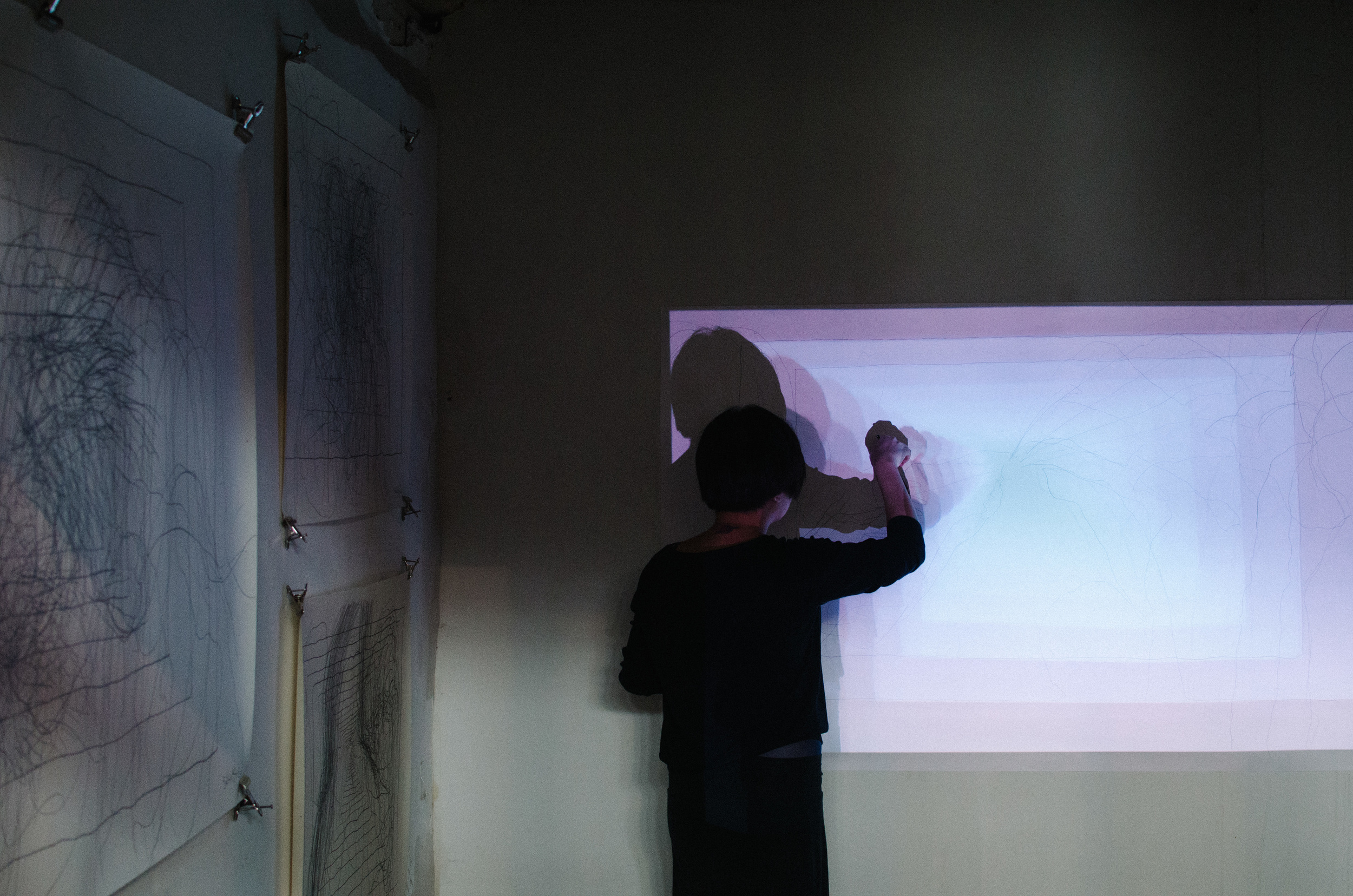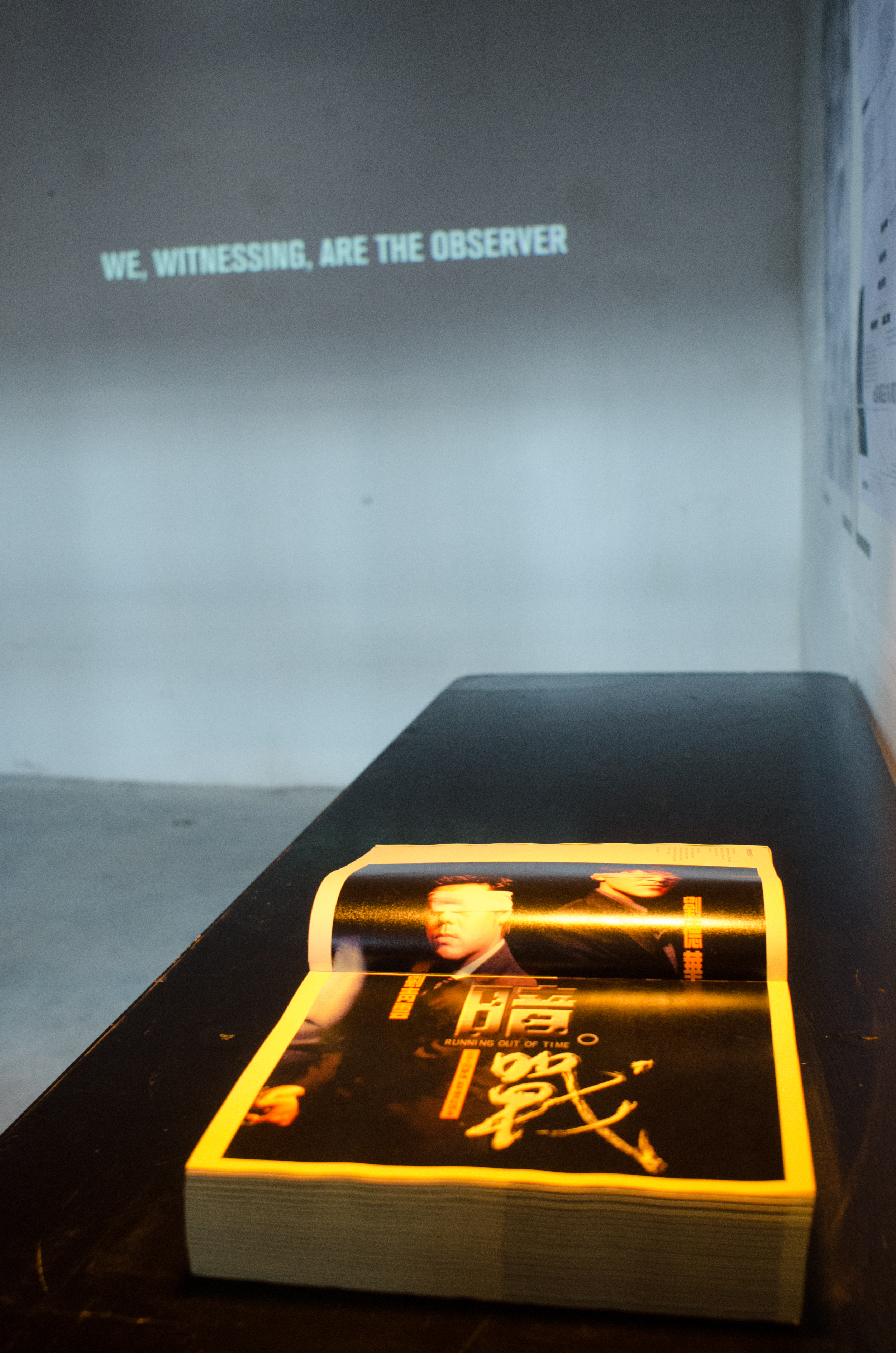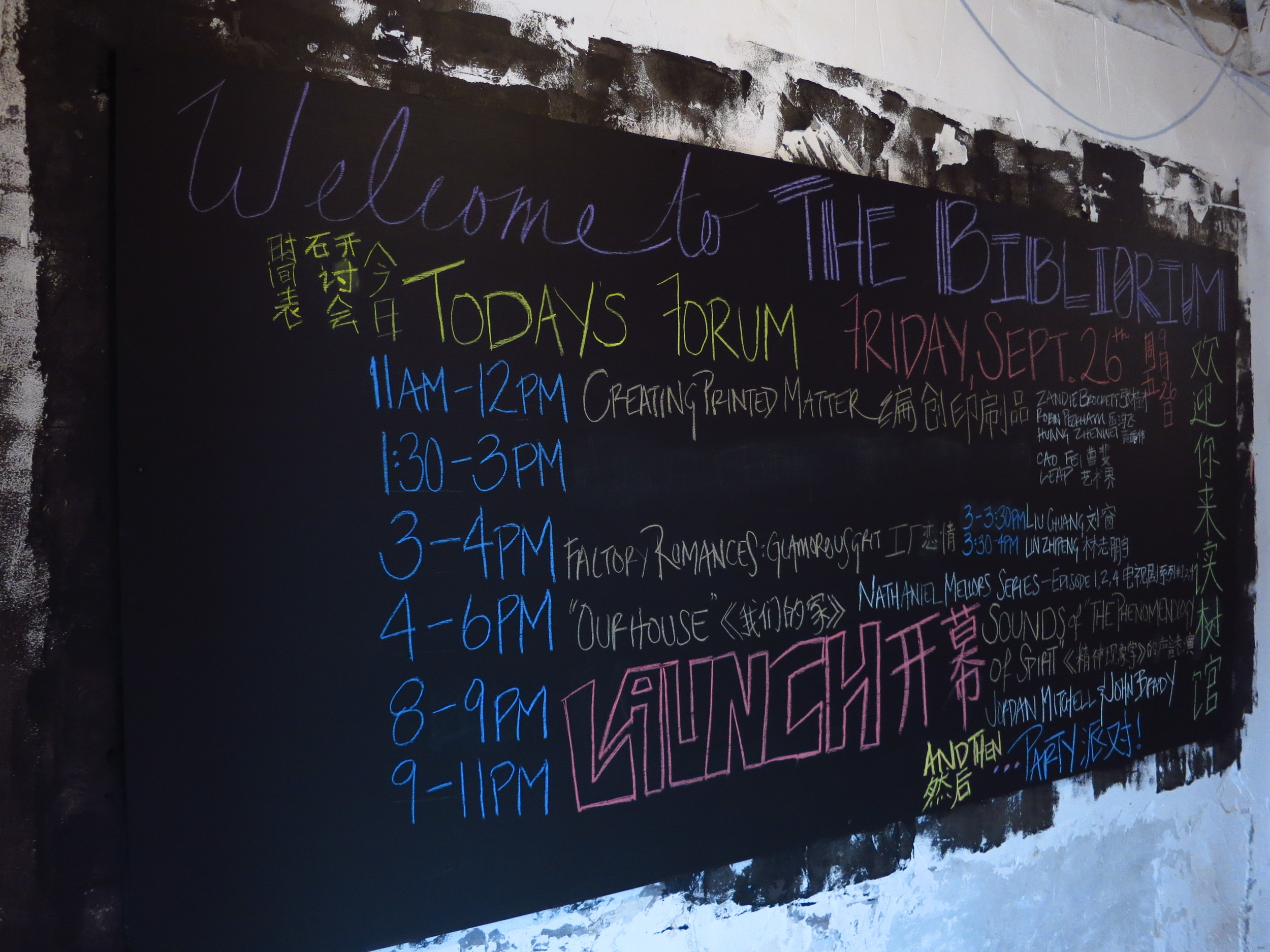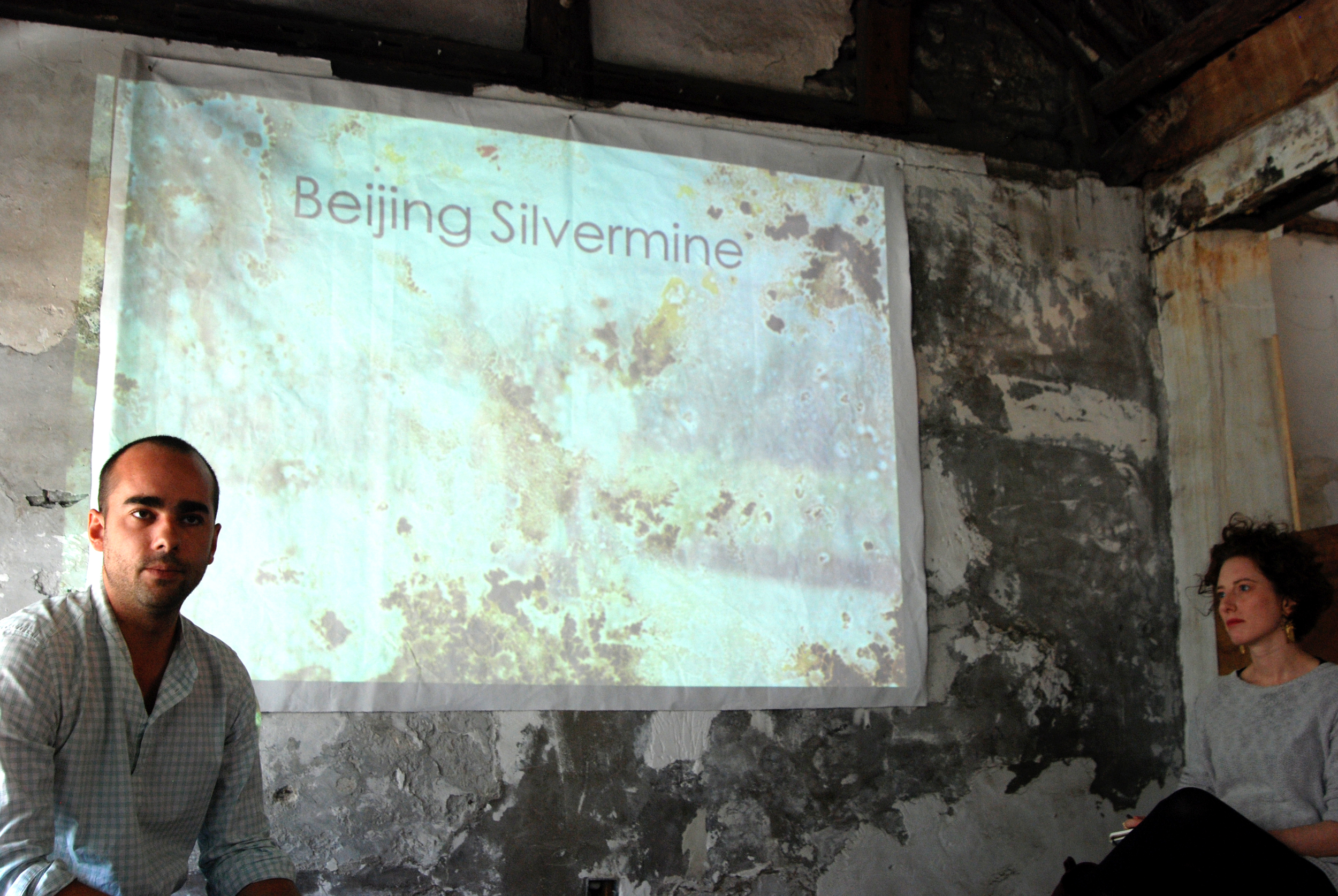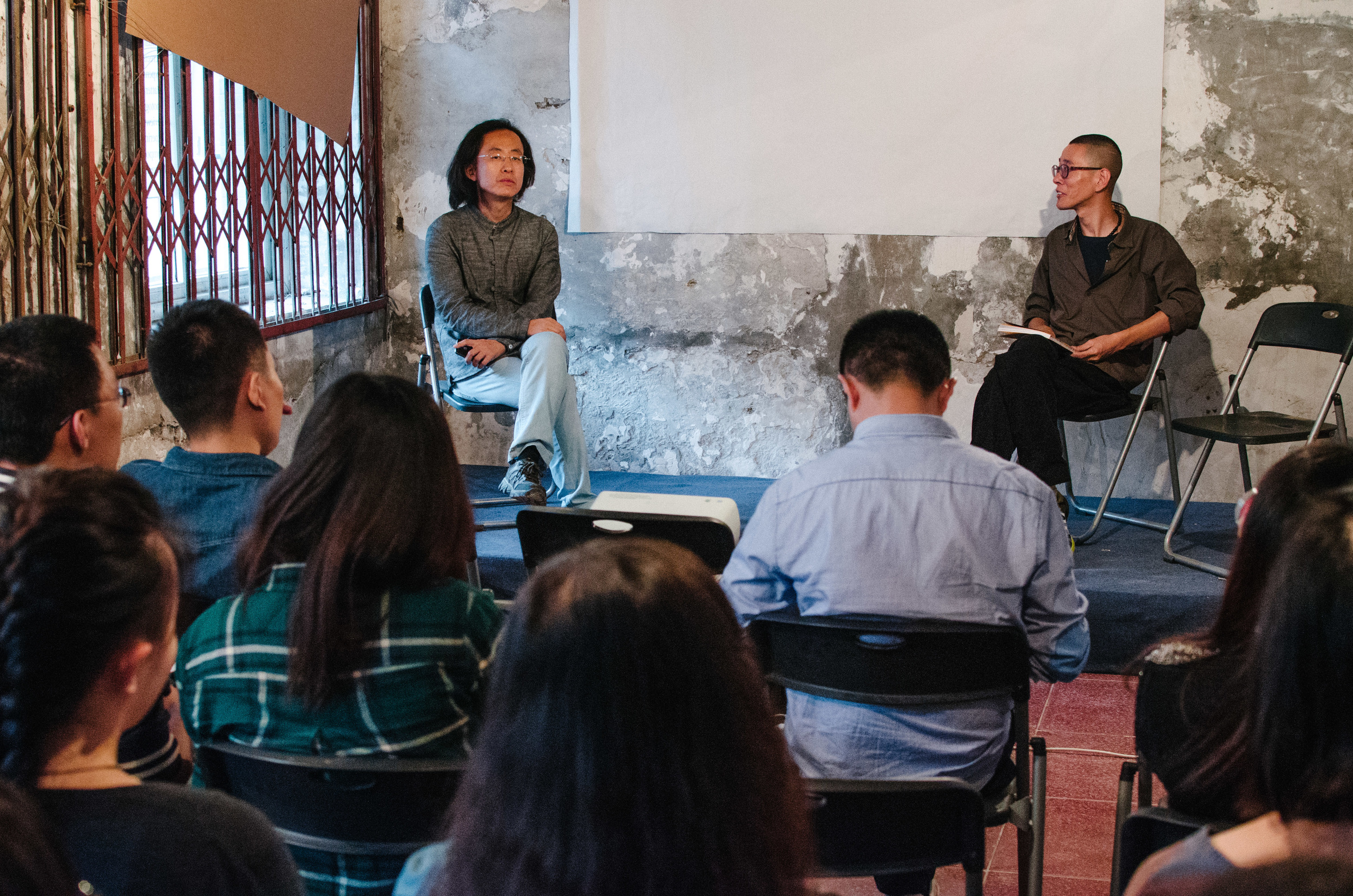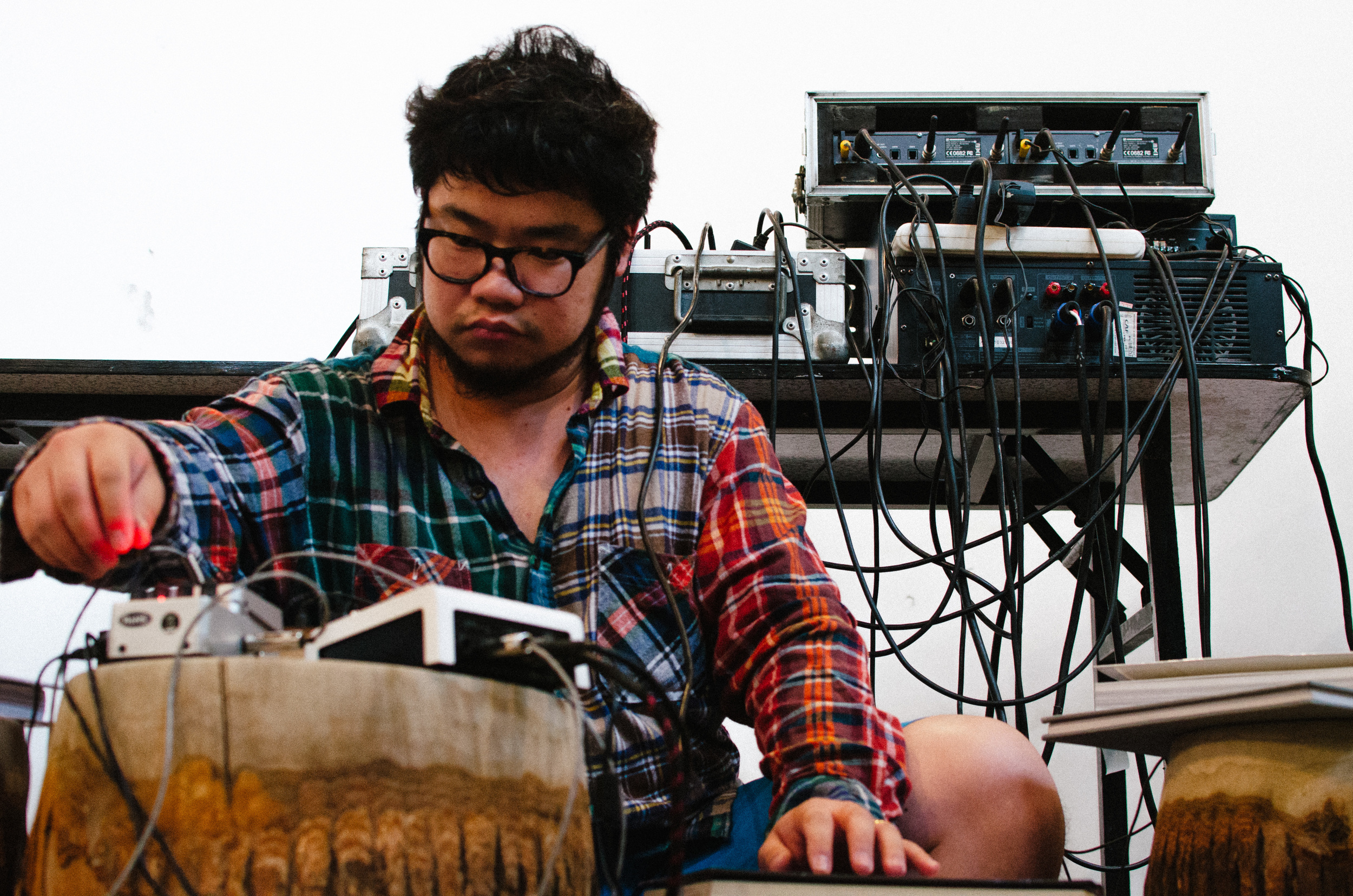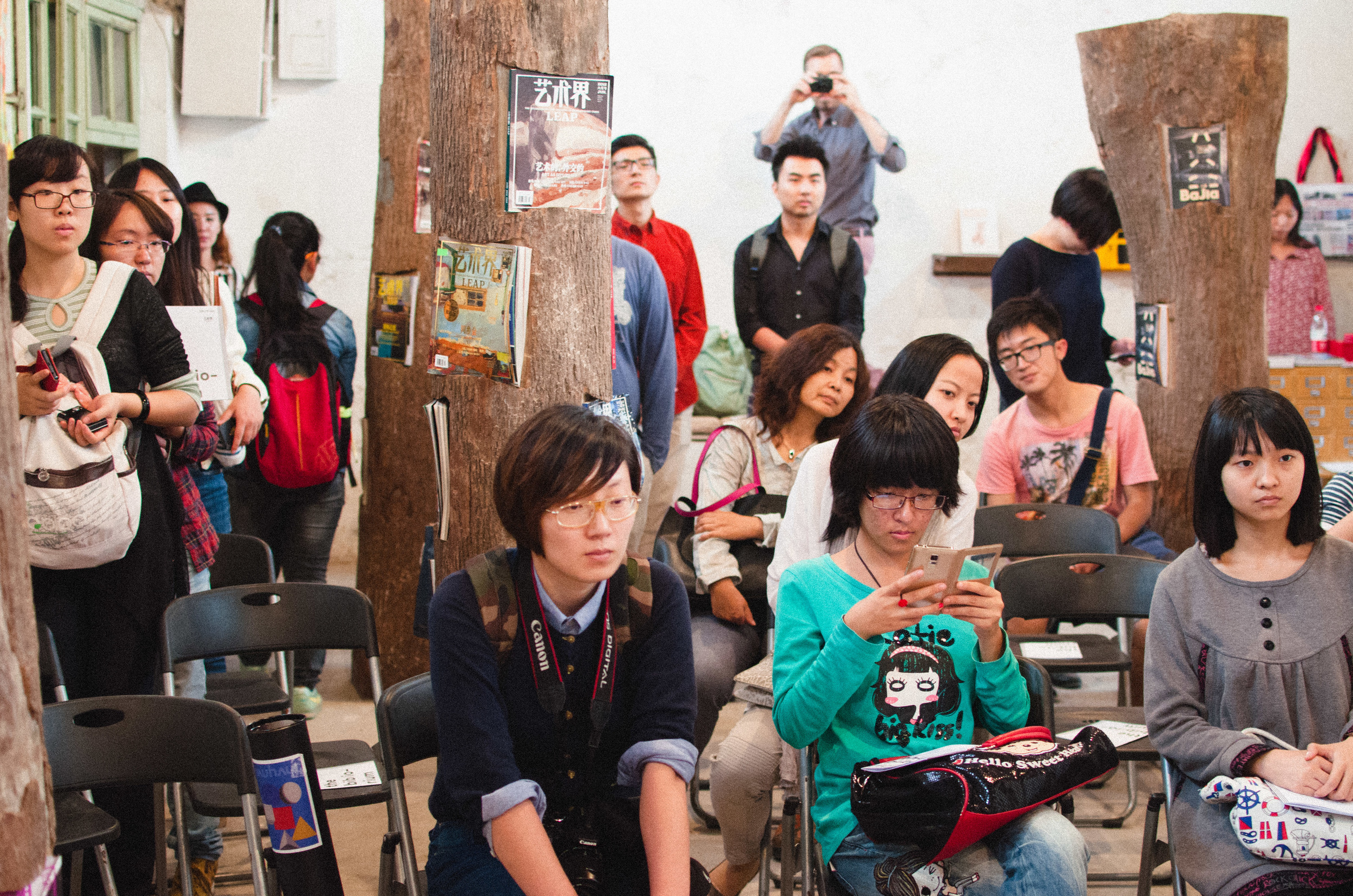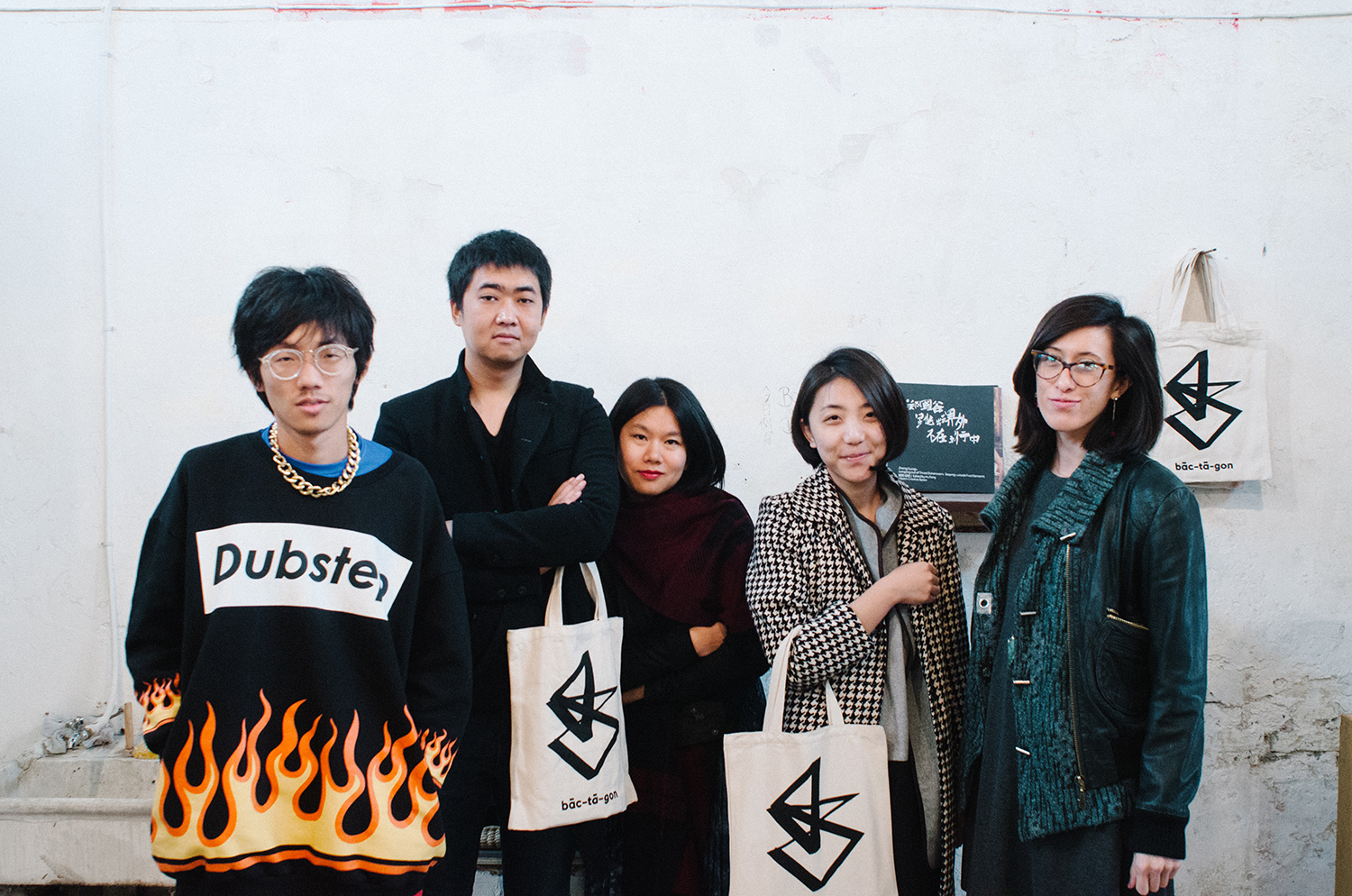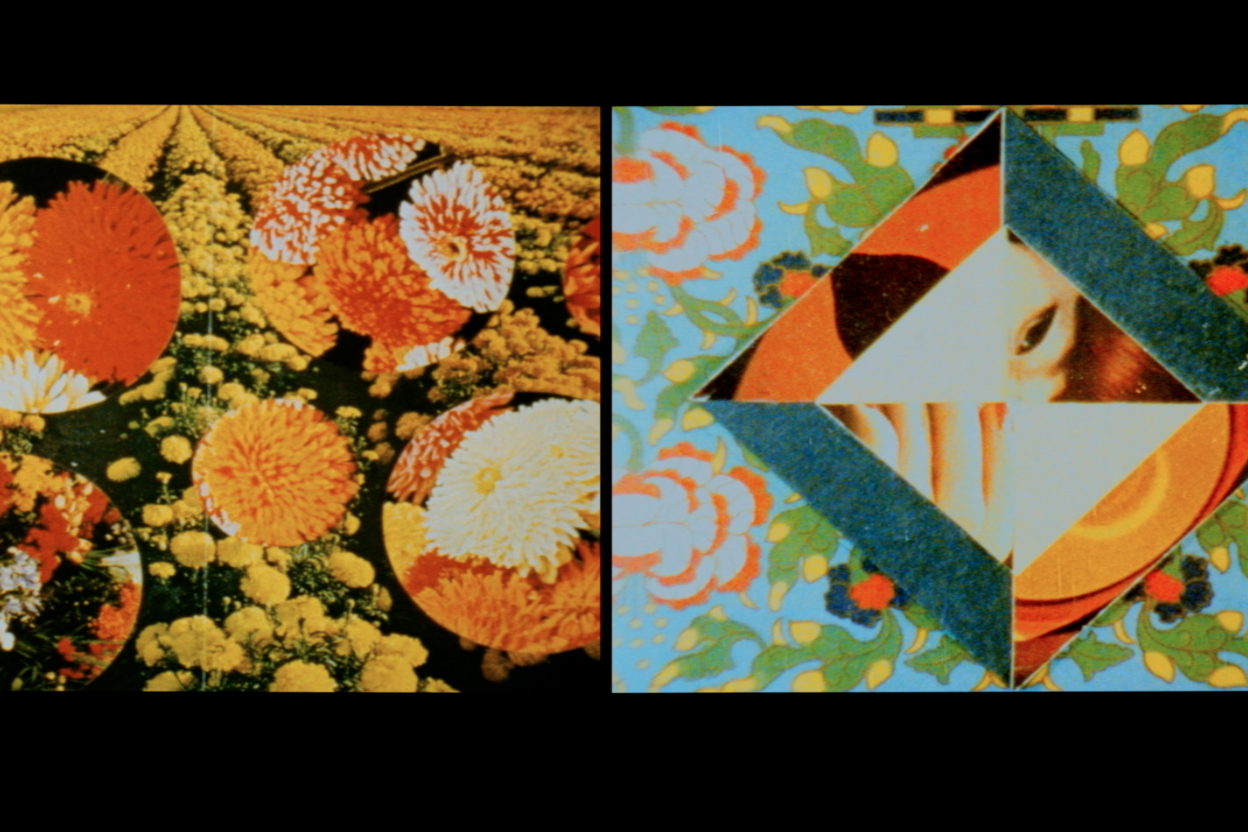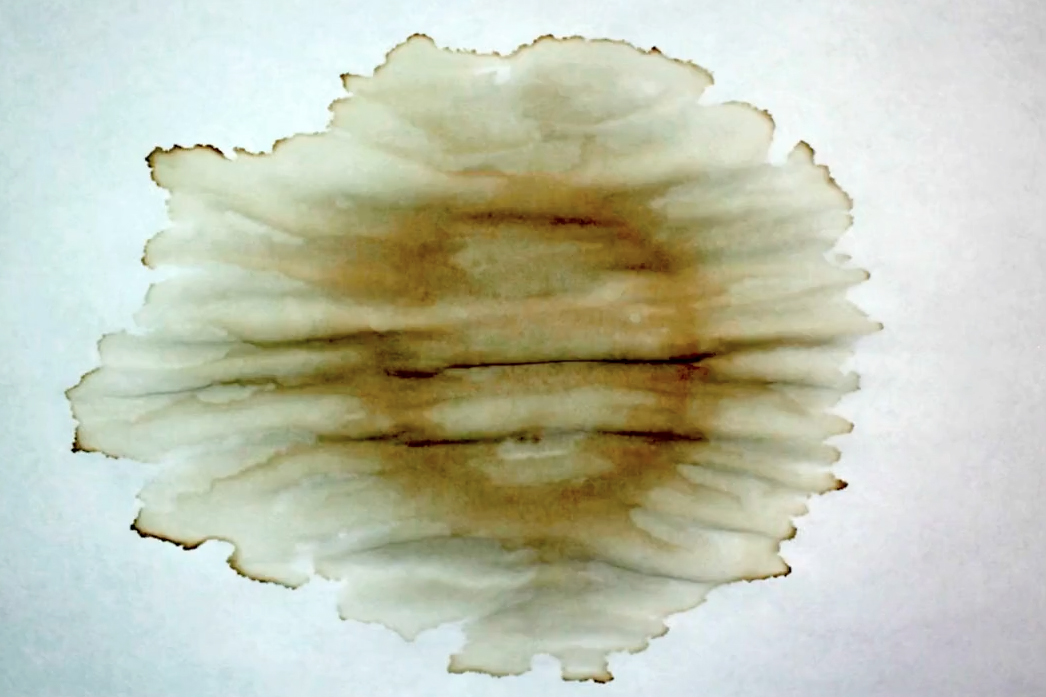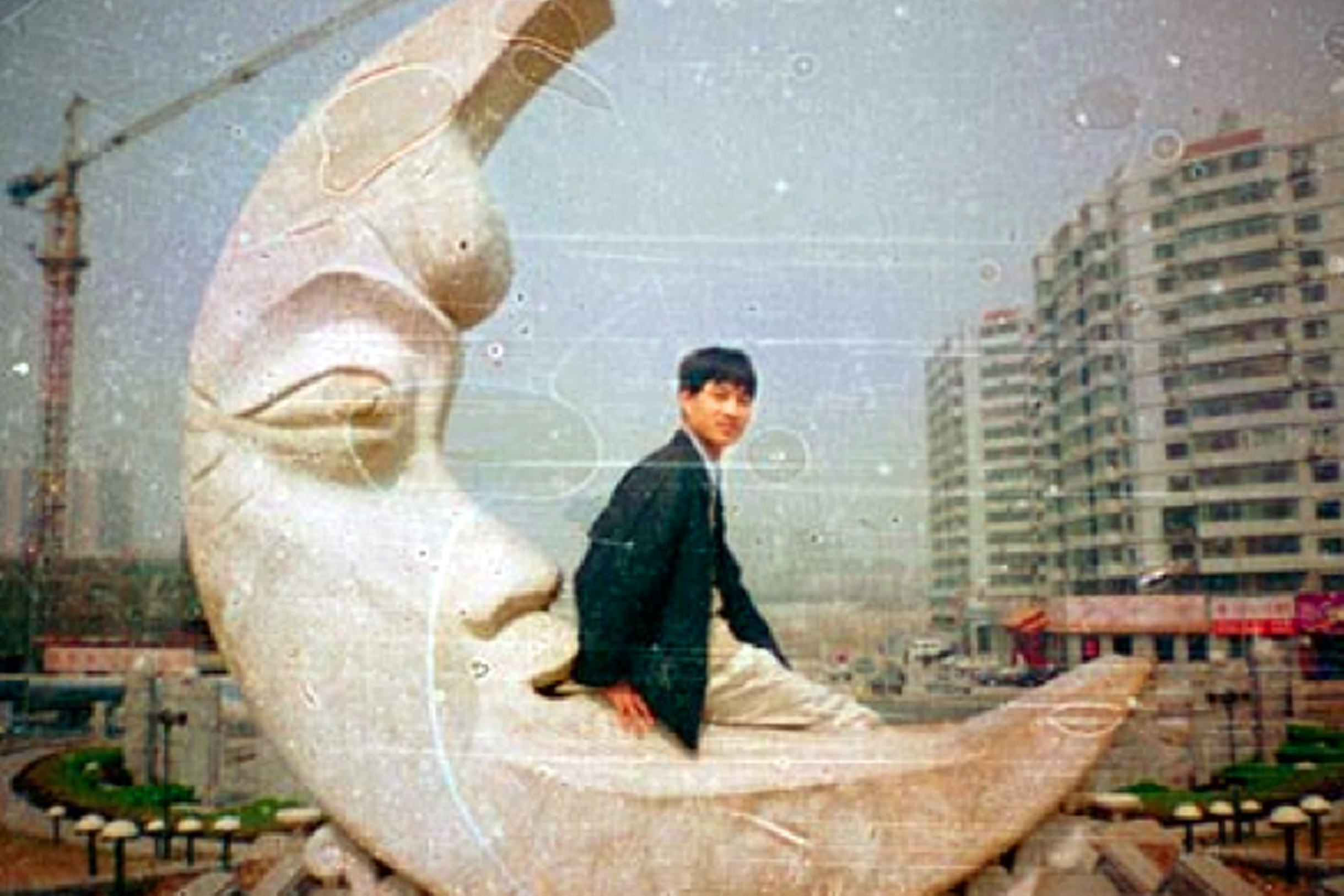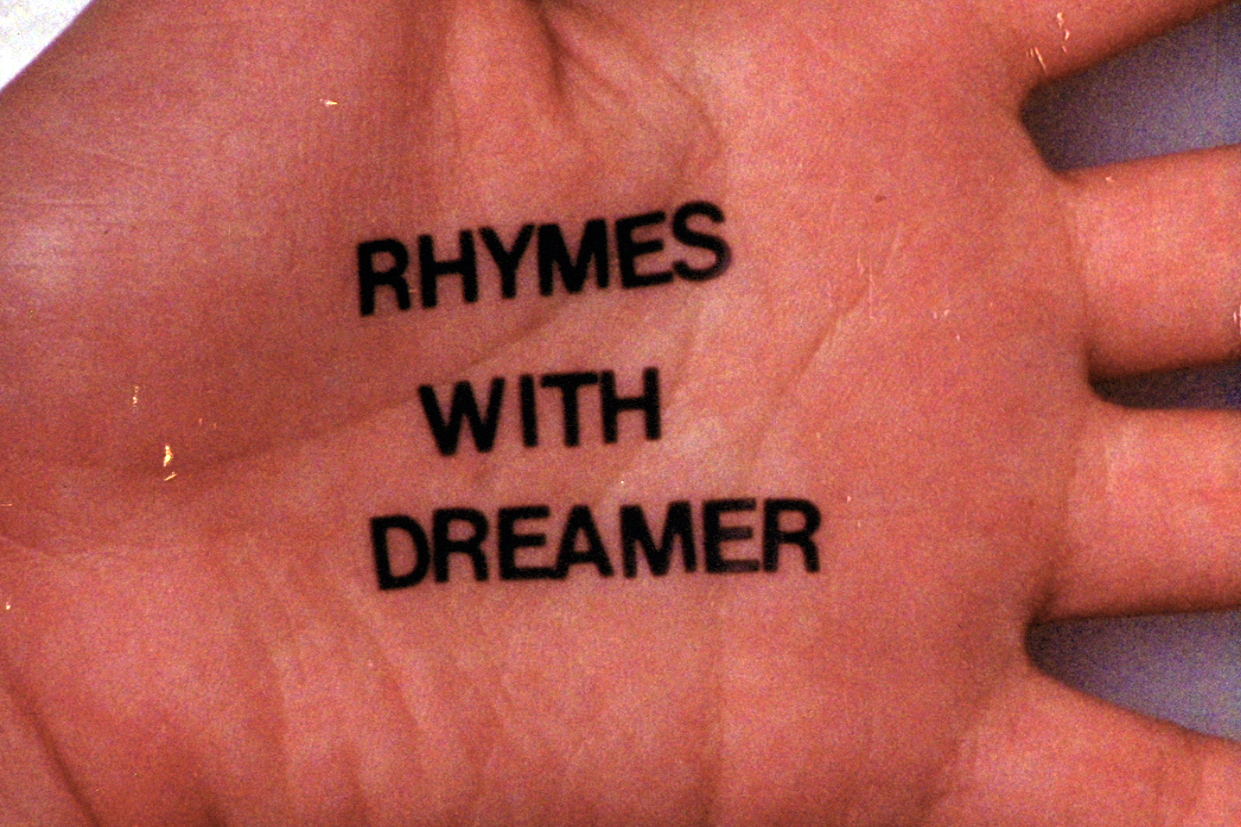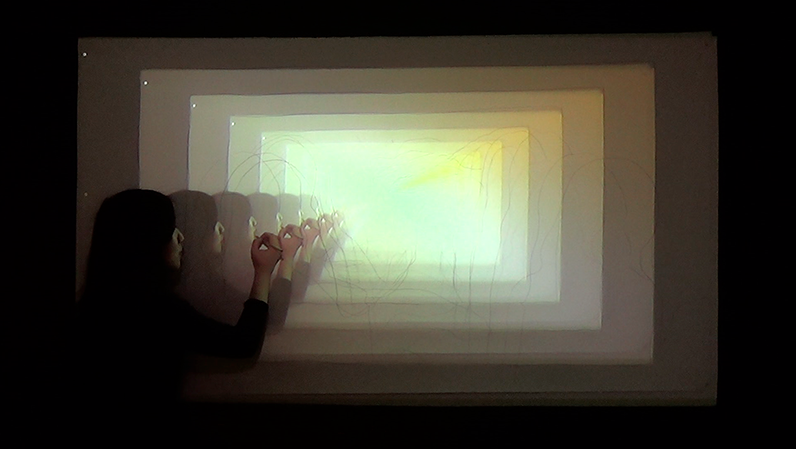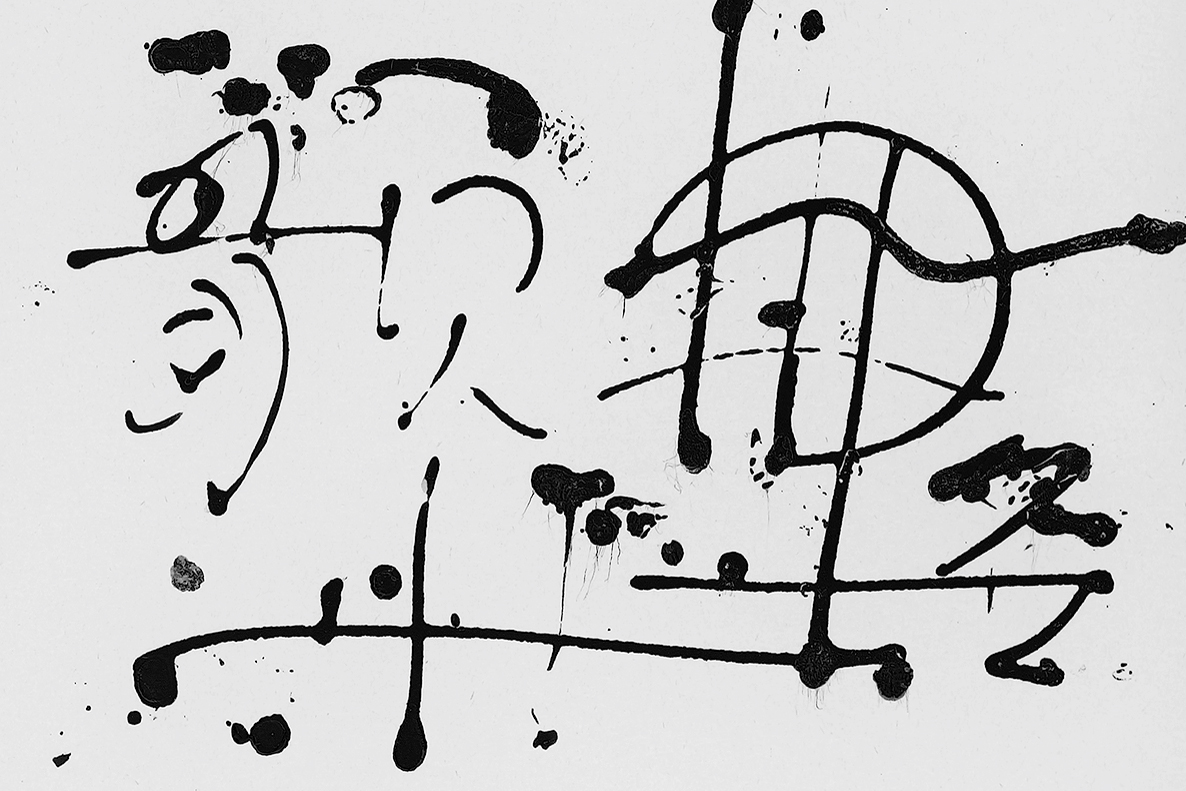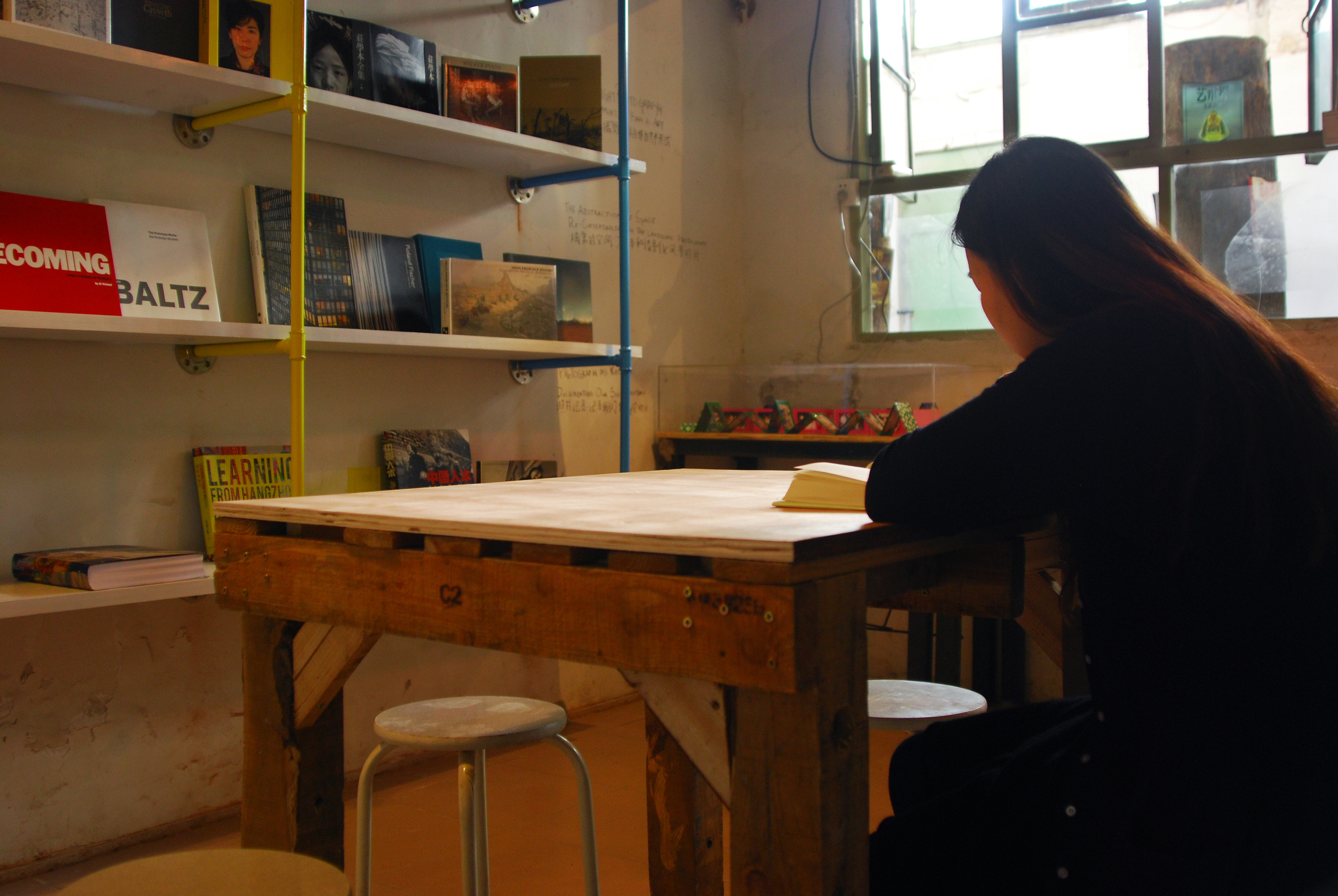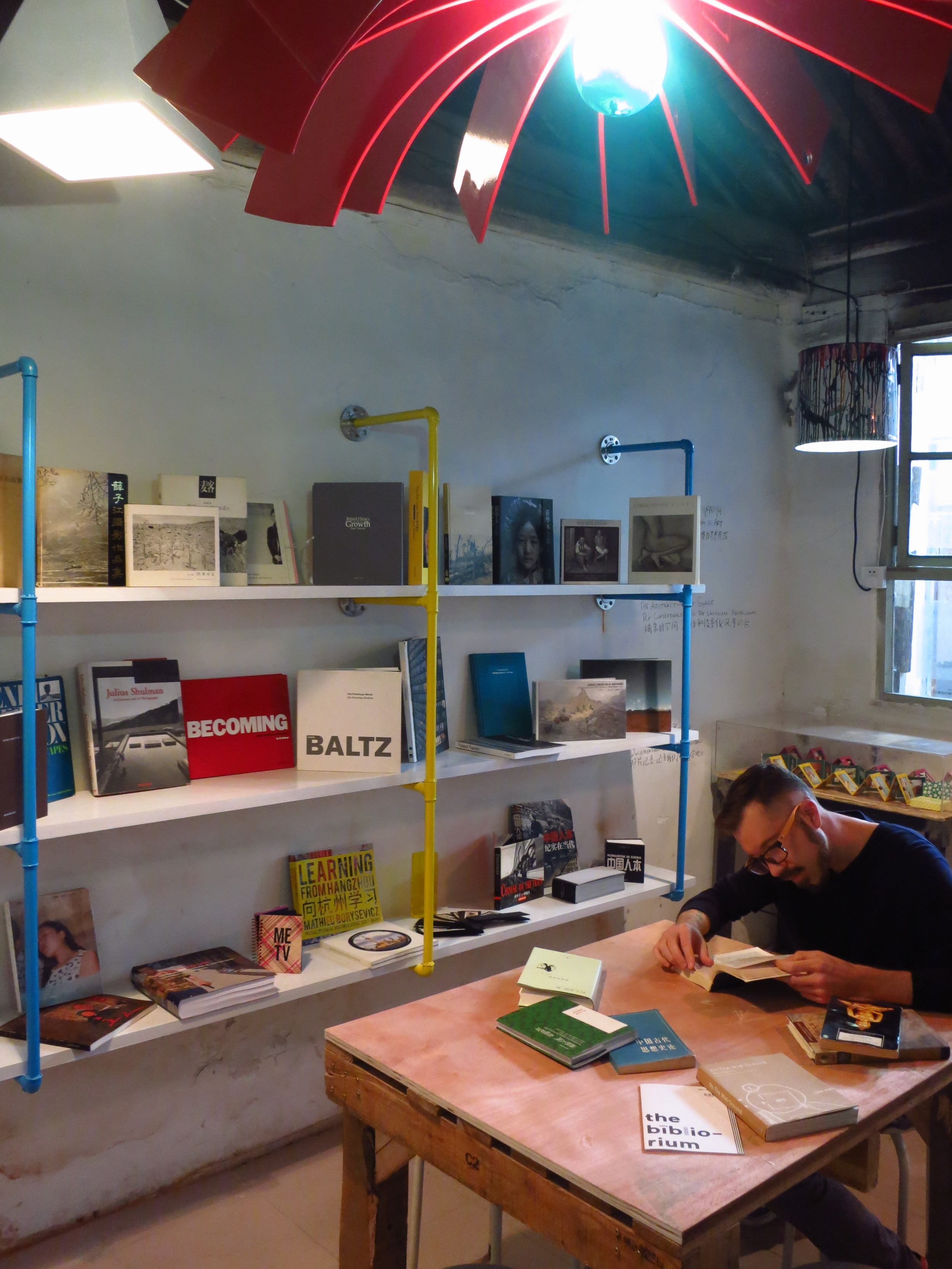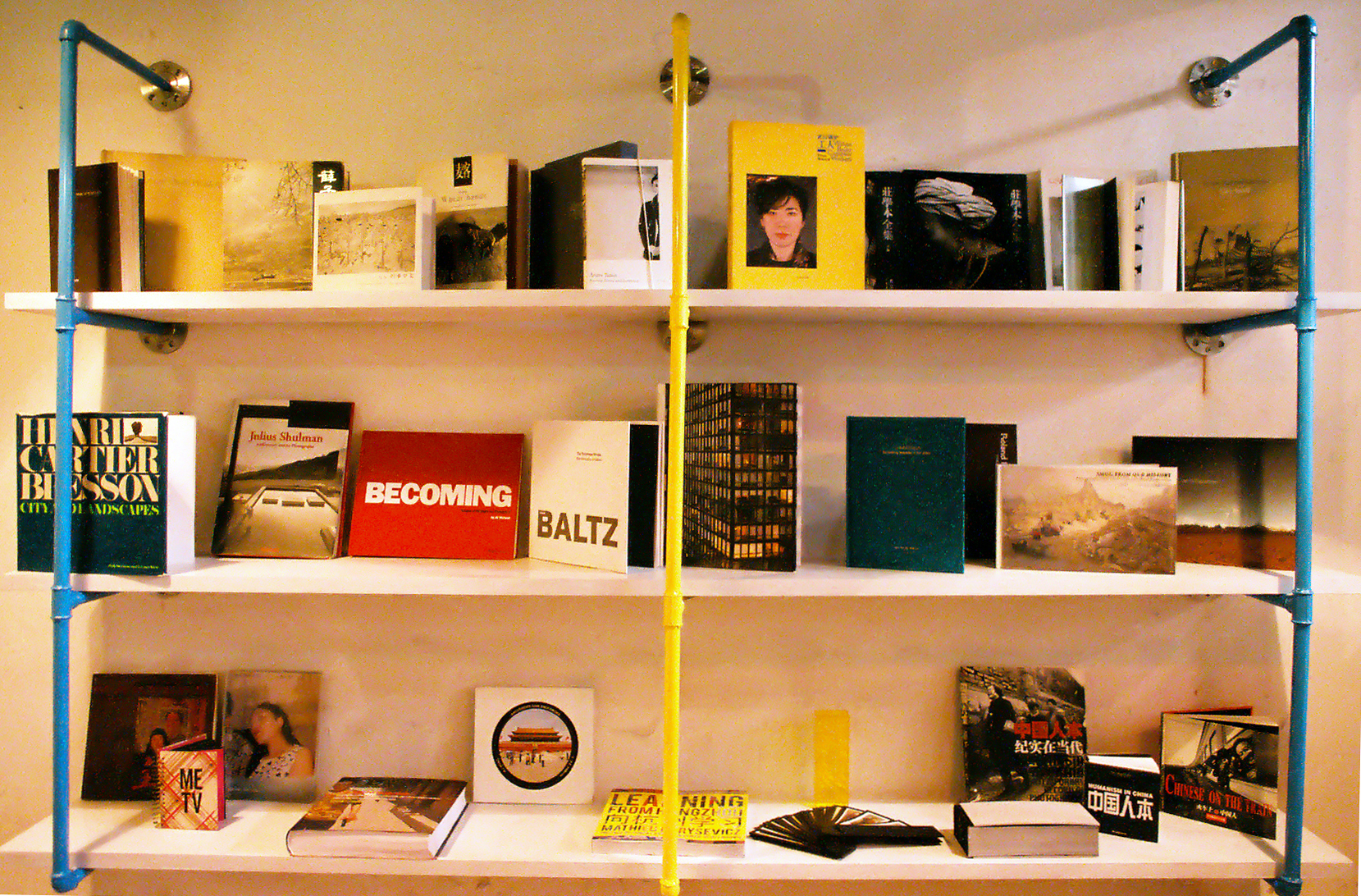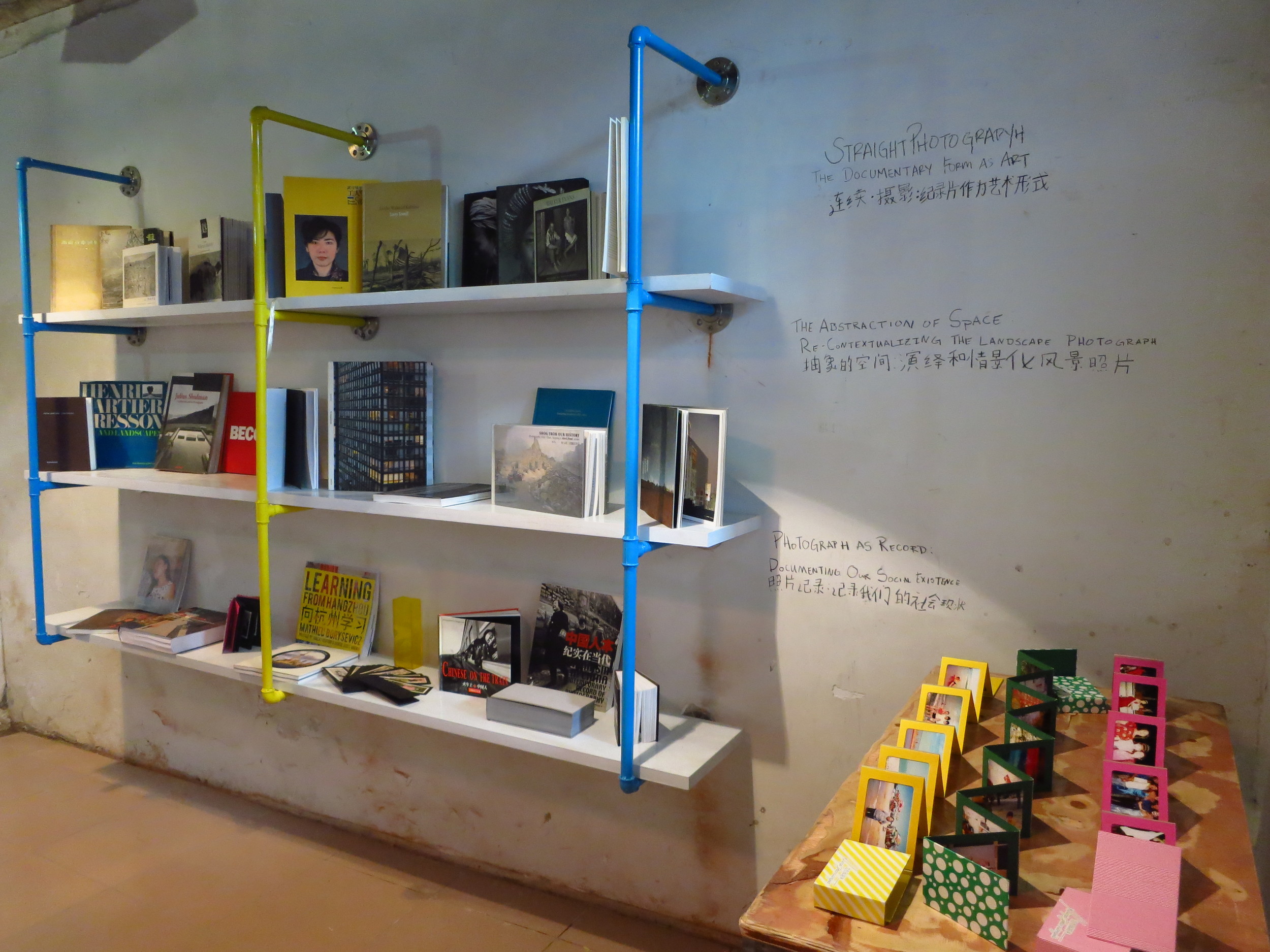The Bibliorium 读树馆 acknowledges the endangered nature of printed matter in the digital age and seeks to reaffirm the worth of certain pre-modern notions, such as book as collectible object, bookcase as designed altar of and frame for collections, and book vendor as guide to learning.
Click Image to Download The Bibliorium Booklet
Including information on Symposium, Installations and Curated Library
"Material Flux"
Curated in Collaboration with Michelle Proksell
Exploring the Intersection of Printed Matter and Moving Image
Curated Library
In Collaboration with Kyle Skor, Jacob Dreyer and Evan Collier. Support from Timezone 8.
A tradition dating back to the construction of the ancient Egyptian Alexandrian Library (300 B.C.E.), book dealing was a commercial practice first implemented by scribes – authors of the books themselves. Bookshops where these books were sold, collected and traded became gathering grounds for discussion between community members, development and exchange of new knowledge, and ultimately a home that fostered the rise of an extensive diversity in printed matter. “Scholars and students spent many hours in these bookshop schools browsing, examining, and studying available books or purchasing favorite selections for their private libraries. Book dealers traveled to famous bookstores in search of rare manuscripts for purchase and resale to collectors and scholars and thus contributed to the spread of learning.” It was first through the collective spirit that printed matter was enjoyed and its contents disseminated.
The prevalence of book collecting came as a byproduct of the formalization of educational institutions around the end of the Roman republic (1st century BCE). By then, it was fashionable to have libraries outfitting private homes, and thus birthing the demand for bookcases. Even Senica noted that “…by now, like bathrooms and hot water, a library is got up as standard equipment for a fine house (domus)”. It was these bookshelves that came to serve as focal points of the interior space, allowing easy organization of and access to carefully developed collections, as well as tangible symbols of a home's dedication to knowledge acquisition. Though bookshelf classification systems have evolved as a result of the printing press, bookshelf design dates back to the Roman days in the West and to the 5th century in China, when circular bookcases were made for storing Buddhist scripture
In an ode to the ways in which printed matter was first experienced, The Bibliorium serves as a contemporary reading room intended to explore the expansive function, history and current use of print. It serves as an –orium in the truest of senses – a functional space for the community to gather, discuss and share thought and knowledge – to reveal bits of the self and perhaps a larger, more collective whole. And, uses the “biblio-” sphere as a vehicle to blur the lines between art and design, video and literature.
Zandie Brockett
作为追溯到建造古埃及亚历山大城图书馆(公元前300年)的一个传统,处理书籍的方式是一种商业行为,它最初是由抄书吏——书籍本身的作者来执行的。卖出这些书籍的书店收藏并交易,然后逐渐变成了团体成员可以相互交流的聚集地,一个可以开发并互换新知识的地方,并最终变成了促进印刷品多样化进步的家园。“学者和学生们在这些书店里花许多小时浏览、研究并学习可供阅读的书籍,或为了他们自己的私人图书馆购买其最爱的选集。书商拜访名声显著的书店以寻找可以购买的稀有手稿,并二次卖给收藏家和学者,以此为推广学习而作出贡献。”印刷品及其内容最早就是通过这样的收藏精神而被欣赏并传播
在罗马共和国(公元前1世纪)的末期,书籍收藏作为教育机构正规化的一个副产品而日渐流行。当时,图书馆作为私人住宅的装饰是十分时髦的,因此而孕育了对于书架的需求。连塞尼卡(Senica)都注意到“…目前看来,像卫生间和热水一样,图书馆已经变成了一座精致房屋(法语:住宅)的标准配置。”这些书架变成了室内空间的焦点,让人们更轻松并方便地组织、阅览这些被精心组装的收藏;它们同时也变成一个家庭奉献于求知的有形象征。虽然书架归类系统随着印刷的发展而进化了,书架设计则可以追溯到西方的罗马时期以及5世纪的中国,那时的人们用圆形书柜来存放手抄佛经。
为了赞颂印刷品早期体验的方式,作为一间当代阅读空间,读树馆旨在探索印刷被扩展的功能,它的历史以及现在的用途。它是古代学院的最真实翻版——一个可以让团体聚集的功能性空间,讨论并分享想法与知识——流露部分自我,并也许可以发展成一个更大的集体。还有,使用“书”这个分层也可以淡化艺术与设计、视频与文学之间的界限。
张桂才



